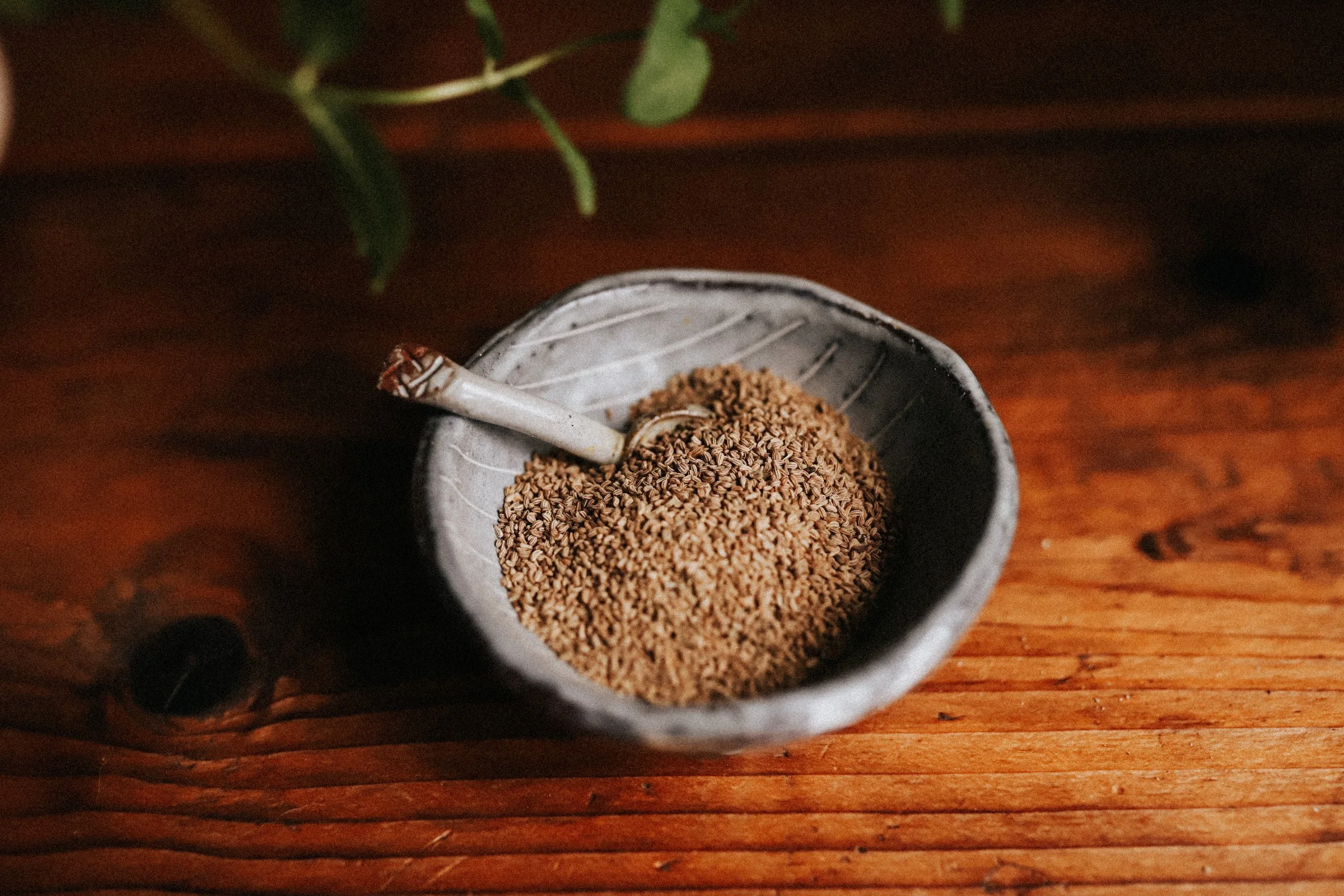AJWAIN
Ajwain: Carum copticum / Trachspermum
The beautiful high stalks of the ajwain plant are called omam - they grow umbels of small white flowers that give tiny oval fruits. The stalks are cut before the fruits ripen, they are then threshed to detach the fruits which are then dried and it is these that are sold in shops.
Mainly cultivated in Asia, mainly in Pakistan and India, the middle East and East Africa - the scent of ajwain is very intense, medicinal and nearly a little fresh thyme like. This is due to the thymol it contains - making it taste a bit like thyme but much stronger.
Ways ajwain is used:
I sometimes use ajwain in my white sauce or cheese sauce to substitute thyme
A little goes a very long way, use much less than use think you need as it intensifies with cooking.
Ajwain is used in both Ayurvedia and Unani medicine (Indo-Persian medicine I’ll be writing more about this soon), to help a tummy ache. As a child a home remedy was to have a teaspoon of ajwain chased down with a glass of water - it still helps settle my tummy.
Ajwain oil is extracted and is known for it anti-septic properties.
Ajwain is used in pickles, curries, masalas and common in Pakistani, Indian Lebanese cooking, in breads and other dishes too.
Make a tummy settling tea with 500 ml water, 1/4 tsp ajwain. handful mint leaves, 1/2 tsp fennel seeds and a pinch of cinnamon. Boild , strain and drink hot.


